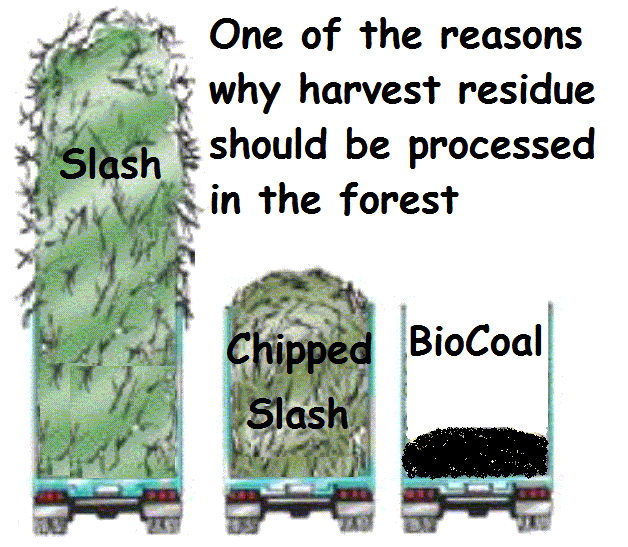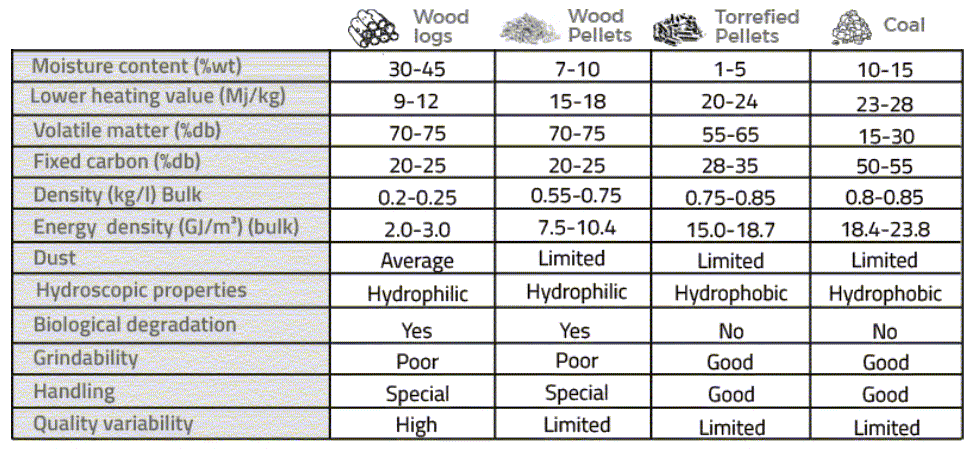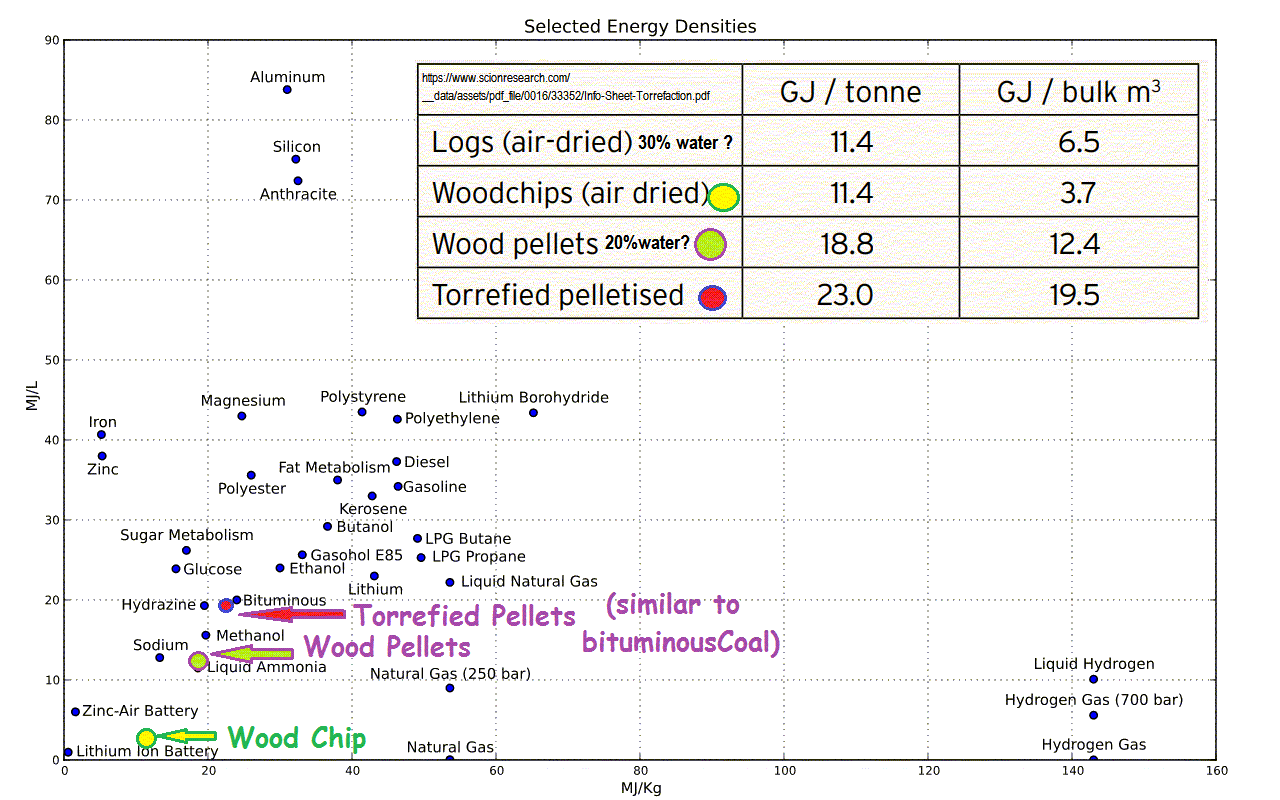logistics_of_biomass
So far in recent history, in developed countries biomass has largely been an economic failure, only used when propped up by massive subsidies.
For example Drax and Natures Flame
There are 3 things that have to happen AT SOURCE to biomass for it to have any hope of being economically feasible;

- Dried
- Comminuted
- Densified
(You don’t see farmers bringing loose wet grass to a central hay making factory! They mow, dry and bale before they transport and store)
A raw pine tree is approximately 50% water by weight, has low energy density, left outside it will rot, it is awkward to handle and store.
The conversion process has to be a continuous process, as opposed to batch processing to eliminate many handling and storage overheads.
Thus the transportable processing machine throughput needs to match the rate of residue production
A Biocoal plant takes this raw bulky perishable commodity and changes it in to standardized energy product that is similar to coal but with less pollution when burnt and a lower water content <5%MC.
The product, Biocoal is easily handled like any bulk material with a loader and bulk trucks. It is impervious to rain so can be stored outside.

Coal, diesel and heavy oil are very energy dense.
The only commercial common energy transfer medium with greater energy density is nuclear fuel. It is not shown on these charts as there is no comparison.

These graphs above also happen to show how weak batteries and hydrogen are in this respect ( hydrogen by volume).




